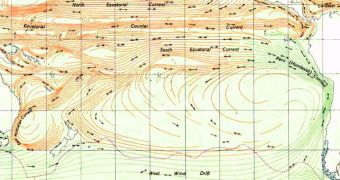El Nino and La Nina are two atmospheric phenomena in the tropical Eastern Pacific Ocean and represent global atmosphere-ocean connections. They occur periodically, and cause significant temperature fluctuations in the oceanic waters. Recently, meteorologists estimated that El Nino could begin its development the next week, bringing about a wave of droughts and floods, and affecting agriculture and homes over large areas. The prediction came from the US Climate Prediction Center in the United States, Reuters informs.
The findings were confirmed by the Australian Bureau of Meteorology, which has announced that, if the global weather patterns keep their current trend, there's a good chance that the climate phenomenon will become active by the start of July. Researchers have over the past few weeks noticed a significant rise in Eastern Pacific temperature waters, a trend that is directly coupled with the emergence of El Nino. Earlier forecasts placed the beginning of the phenomenon between June and August.
“These surface and subsurface oceanic anomalies typically precede the development of El Nino. Current observations, recent trends, and the dynamical model forecasts indicate that conditions are favorable for a transition to El Nino conditions during June-August 2009,” the CPC said in a recent statement.
The effects it has on the United States can materialize in wetter and warmer climate in western states, as air masses coming above the continent from the Eastern Pacific are laden with warm water droplets, evaporated from the ocean. In its most severe instances, El Nino caused widespread droughts in Australia and Indonesia, endangering crops, and massive floods in Peru and Ecuador. It can also cause floods in the United States, if it catches authorities off guard.
Meteorological agencies around the world have realized that being aware of the development stage of El Nino is paramount to preventing large-scale damages. The effects that the phenomenon has stretch as far as India and Asia as well, where it can cause a shift in the patterns of the monsoon. Several countries in the area are severely dependent on these rains for their agriculture, and any shift could place millions at risk of starvation.

 14 DAY TRIAL //
14 DAY TRIAL //